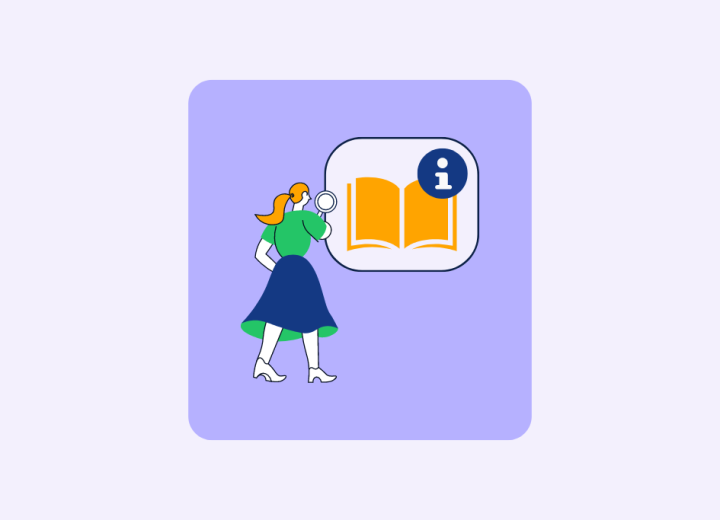Just like other consulting firms, BCG has also its test – the BCG Potential Test (also known as BCG Online Case). The standard version of the BCG Potential Test is computer-based, meaning you will have to deliver your results directly on the computer screen. The BCG Potential Test is peculiar, since, unlike other tests, you are penalized if you provide the wrong answer. Thus, guessing is not much welcome if you run out of time.
The BCG Potential Test – 9 Important Tips to Crack the Case
What is the BCG Potential Test and why is it important?
The BCG Potential Test is a computer-based test used by the Boston Consulting Group to test the analytical, logical, and problem-solving skills of candidates. It is also known as BCG Online Case.
The test consists of 23 multiple-choice questions with 45 minutes available to answer them. It includes a single case only. Candidates receive +3 points for the right answer, 0 for missing answers, and -1 for wrong answers. It is possible to skip back and forth between questions.
Calculators are generally not allowed except for a few countries – HR should be able to help to clarify that.
What is the BCG Potential test cut-off score?
There is no known global bar for the Potential Test at BCG, meaning this could vary according to the office. However, the rumored score is 70% of the maximum total score. Be aware that each mistake implies the deduction of one point, thus this score means more than 70% of the total number of questions in case you do a mistake.
When do I get my BCG Potential test results?
Results are usually delivered within two weeks. Sometimes the test is done as part of an interview round, in which your performance in the test will be assessed together with your case interview performance.
Tip 1: Check if the Potential Test is part of the selection process
The Potential Test is a classical screening tool for entry-level positions and can be proposed also as part of the process for more senior roles. However, it is not used in every country and for all the levels of seniority. Moreover, it is not always present during the first round – sometimes it is part of the following rounds of interview. HR usually clarifies whether you have to take part in the test when presenting the next steps in the interview process. If that is not clear, we would recommend clarifying it before starting the preparation on the test.
Tip 2: Know how to quickly interpret data
Graphs and charts are commonly part of the BCG Potential Test, so it is important that you know how to analyze and interpret data. It will save you a lot of time and brainpower during the test if you are able to quickly read charts and grasp their key message. When presented with an exhibit, you should follow these three steps:
- Figure out what the table or chart represents. This could be as simple as reading the headline as well as the label of each column and row.
- Read and understand the data. You may have to do some math here – in your head or on paper.
- Most importantly, grasp what the insight is. Why were you given this exhibit? Don’t get swayed by data that implies some information that cannot be inferred without making assumptions!
By the way, even though the aim of the BCG Potential Test is not to test business knowledge, it’s good if you are familiar with the basic business terms.
Tip 3: Carefully select your practice material
Unlike the McKinsey PST, there are not many available versions of the BCG Potential Test online. Furthermore, the actual content and difficulty of the test change according to the website. Although the general practice is always beneficial, you want to train with the closest material to the actual test.
For this reason, we have created ad-hoc tests for the BCG Potential Test that resemble the test you will have to complete on your selected day. This ensures that you can face tests that are not too simple and resemble the real content of the BCG Potential Test you will go through.
Tip 4: Practice the Potential Test under real conditions
When practicing the Potential Test, it is important that you:
- Practice without printing the test. On the test day, you will have to solve a computer test.
- Practice with a timer. You will have approximately 2 minutes per question in the real Potential Test. It is important that you practice keeping the same time constraint, or you may dedicate too much time to the initial questions the day of the test.
- Consider skipping questions instead of answering all of them. Unlike other tests, you will be penalized for wrong answers.
Check your score after each practice test and identify the type of questions you have difficulties with and focus on them by doing extra exercises. However, there might be some areas that you are just naturally weaker at - don’t stress too much about these. Get yourself to a level where you feel competent - you don’t have to be perfect. Over time, you will become familiar with answer trends, question types and you will get your own flow of which questions to estimate, leave, or compute.
Tip 5: Train your mental math skills
Overall, the questions given in the BCG Potential Test are not that hard. The biggest problem in passing the test is the limited amount of time you have. In this article, we introduce to you a few ways how you can save time during the test. The most obvious skill to improve in terms of speed is by improving your mental math skills. The trick here is the right kind of preparation:
- Learn the right tools. Know the basics, like simple multiplication tables, long divisions, and fraction/percentage calculations. Our Mental Math Tool allows you to practice these skills extensively.
- Know how to handle these tools. Practice accurate calculations first. There is no point in quickly calculating the wrong results.
- Apply the tools – fast. Practice getting faster once you are certain that you end up with the right results most of the time.
Tip 6: Improve your reading speed
Potential Test questions come with a bunch of information and data, not all of which may be relevant to your answer. When you feel confident with your mental math, you can work on your reading speed to help you cope with this overload of the information under time pressure. Here are some things you can do:
- Practice quick reading. There are various speed-reading exercises online or smartphone apps that can help you to double the words you can read per minute. After 15 minutes of exercise, your reading speed will increase significantly, so do some speed-reading exercises right before the test.
- Always read the question first. This helps your brain to focus on relevant information. By then reading the answers and finally the additional information, you will prime your brain to look for the information you need and skim through the useless parts quicker.
- Practice quick identification of key information. After having finished several practice Potential Tests, you will get a feeling of the wording of the questions and you will know where to find certain information. Oftentimes, the answer to a question is hidden in a single paragraph or graph.
Tip 7: Don’t waste too much time on a question
A general rule of thumb is that if you have no idea how to solve a question within the first 30 seconds, you should move on to another question. If you know how to, commit to a time of a maximum of 2 minutes in total for each question, and move on to the next question if you surpass this limit. If you practice enough, you will be able to recognize harder question types.
If you encounter a question that turns out to be too difficult, resist the temptation to crack it. Don’t guess as it is punished with negative marking. It’s important to be ruthless! Imagine someone was looking over your shoulder and giving you objective advice on when to move on. In this way, you will not end up wasting too much time on an exercise. If time allows, in the end, you can go back to a question and try to solve it.
Tip 8: Use the elimination method
Sometimes it could be easier to cross out wrong answers rather than identifying the right one. The elimination process helps to restrict the number of possible options and go for the most suitable one. Still, please remember that you are marked negatively for the wrong answer, thus consider this if you want to guess the answer after eliminating one or two options.
Make sure to check that you marked the answer to a question that you solved. It would be a pity to lose points on minor flaws like that.
Tip 9: Dress properly
Even if you are planning to have interviews on a day different from the one of the Potential Test, please dress properly which in consulting terms means putting on a suit. We know that many candidates repeat the same mistake and make a bad first impression!
Practice BCG Potential Test/Online Case examples on PrepLounge.com
In close collaboration with a team of experienced MBB consultants, we designed BCG Potential Tests that are quite similar to original tests by BGC. You can download them as PDFs and use them to practice and optimize your test performance. Going through a sample will give you a feeling for the different types of questions BCG likes to use. We made sure that the tests have the optimal difficulty level to help you ace the real BCG Potential Test. Practicing with the best and newest material online will save you a lot of time during your practice and will help you optimize your test performance. Follow our 9 Tips and start practicing BCG Potential Tests now!
PrepLounge: The key to your success
As a PrepLounge user, you will receive access to all these perks. PrepLounge will accompany you all the way from your application through to your contract negotiation. You strongly diminish your chance of success without sufficient preparation. Invest in your future and give yourself the best chance at acing your case interview! Exchange your experience with peers from all around the world in our Consulting Q&A. Join our case interview community today and embark on your journey into consulting!
Continue to Learn




